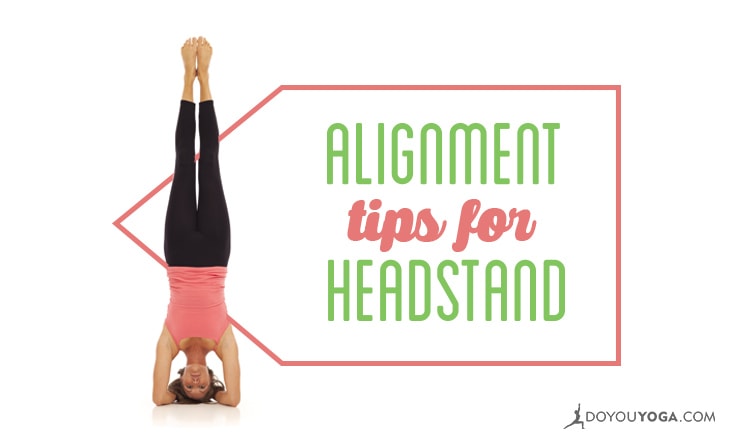Being upside down is a great experience. Headstand, or Sirsasana, engages the upper arms and the core, teaches us patience, and invigorates the body because gravity pulls blood to your head. It's called the King of Asanas due to its many benefits, so it's worth trying to include in your personal practice.
Here are some alignment tips for Headstand, and suggestions for your journey towards the full pose.
1. Organizing Your Base
The base of your pose is the most important aspect, so it's worth focusing on making it solid. Check first that your arms are actually shoulder width apart. You can start by taking a hold of your elbows with both hands, and then keeping the elbows where they are, while you move the forearms to face forward, and interlace the fingers.
You can take the bottom pinky finger inside the hands so it does not get too much pressure once you start putting weight on the arms. Also try to keep the wrists straight so they are not turning too much towards the outside or inside.
You can also keep a belt around your upper arms to ensure that the forearms are staying at the correct distance.
2. Let's Start With a Dolphin
Everything new we do takes time, and can best be done one step at a time. If you have never done a Headstand before, you don't need to be aiming for the full pose immediately. Just like a split doesn't happen overnight, neither should a Headstand.
Start getting ready for Headstand with several prep poses. Dolphin Pose is a good pose to build up your upper body strength, and to get used to having weight on your arms. You can come to Dolphin Pose by placing your forearms on the ground, arms shoulder-width apart.
You can interlace the fingers, as you would for a Headstand. Walk your toes closer to the elbows, and try staying here for 6-8 comfortable breaths.
You might practice just this for some time, until it gets comfortable. To take things further, lower your head in between your arms on the ground, and bring the crown of the head to touch the floor. It's called Headstand, but you are not actually standing on your head, and almost all of the weight should be on your arms.
So keep those shoulders strong and lift them away from the ears.
3. Stacking Yourself Up
When rising into the full pose, the head, shoulders, hips, and feet should be stacked on top of each other. Again, this does not have to happen overnight, so take it one step at a time.
From Dolphin Pose, walk you toes close to the elbows, and tuck in first one knee close to the chest, toes pointing towards the sky. Change legs, and continue until you are comfortable here. Eventually tuck in both legs, so that all of the weight is on your arms, while your legs are still bent. Practice having your head, shoulders, and hips aligned.
Once you are ready, you can go on to lift those legs up high, and aligning the feet with the hips.
4. Coming Out With Control
When you are coming out of the pose, remind yourself to do this slowly.
First, bend your knees back close to your chest, than straighten your legs until your toes can touch the ground. Slowly lower your knees to the ground, and come down to Child's Pose.
Contraindications
- If you are having back or neck injury, headache or high blood pressure, it's best to avoid the pose.
- If you are menstruating, it's better to avoid inversions. During menstruation you can practice Viparita Karani instead, Legs-Up-The-Wall pose.
Inversions teach us to conquer our fears about falling down, and challenge our view of the world by reversing it all. Enjoy this great pose, and the many benefits it brings to both the mind and the body!


